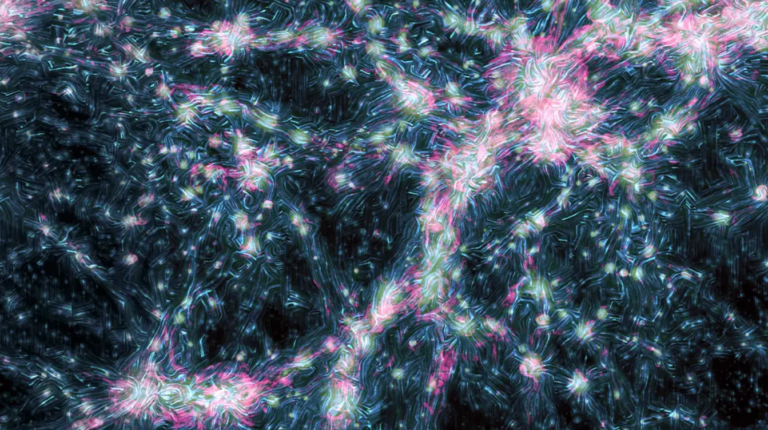In the first time since the star explosion, astronomers discovered curls of these shock waves rippling along strands of cosmic network — the wide-spread net of galaxies, gas, and dark matter which occupies the visible universe.
Through harnessing masses of hundreds of thousands radio telescopes’ images and linking them together, scientists revealed how fundamental physical phenomena like shock waves and magnetic fields spreading and crossing the entire universe naturally illuminate otherwise empty spaces. Detection of boson catcher (the name given to the superheated shock waves) might be the possibility to get the astronomers new depths of understanding and the properties of whose consequently is mysterious because the researchers report in the Science Advances.
Going to its widest degree, the moment is more like a type of “Swiss cheese”. The presence of the cosmic web is not uniform across the universe; the giant clusters, located within the superclusters linked through the filamentary strands that are made out of a sparse gas, galaxies and dark matter are separated by non-empty cavities.
The more massive galaxies gravitate and move leading to filament merge and collisions, while gases from the voids descend into filaments and clusters. In many cases of cosmic web simulation, the entire arrays of quasars activity eventually leads to unexpected and dire substantial shock waves both in and along filaments.
Filaments can be found in most of intergalactic space but astronomers have great difficulty in locating them. Such cosmic threads are much less distinct and difficult to observe compared to galaxies. While scientists have indeed documented shocks in clusters of galaxies to date, filaments have been the only structures where no shocks had been discovered until recently. Nevertheless, astrophysics expert Reinout van Weeren of the Leiden University in the Netherlands, who did not participate in the study, confirms such types of objects ought to be all around us in the uniformity of the cosmic web.
Superseded by trouble waves on lines would accelerate charged particles these along continuously present magnetic fields. When this happens, the particles which are emitting radiation, become subject to detection by radio telescopes, but this can only take place if the radiation is of very low energy.

Interestingly, a single shock wave dispersed within a cosmic web would look like simple noise, with the waves being almost imperceptible according to radio astronomer Tessa Vernstrom of the International Centre for Radio Astronomy Research in Crawley, Australia.
It has been replaced with the aggregated radio pictures of about 600 thousands of well-grouped galaxy clusters by filaments. This work lead to the de-damping of the radio wave signals, attenuating the noise up to the discovery of a faint radiation originating from the inter-cluster space.
The weak signal displays elevated polarizations, which suggest that the radiowaves have parallel alignments. Happily, extremely polarized light is a rare phenomenon from the universe given that gamma-ray emissions are already expected to be from object’s collision result, as van Weeren mentioned.
Although we can be sure that the surroundings of our Earth are immersed in magnetic fields, the real origins of them are still an open question. Also gazing forth the mysterious role of these welcomes is the contribution they make in shaping the cosmic web.
“The man or woman (Magnutology) is one of the four fundamental forces of nature which exist on these scales, but the significance for this stuff is still unknown,” Vernstrom concludes.
Do not forget to share your opinion with us to provide you with the best posts !




0 Comments